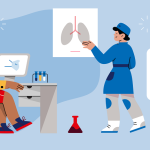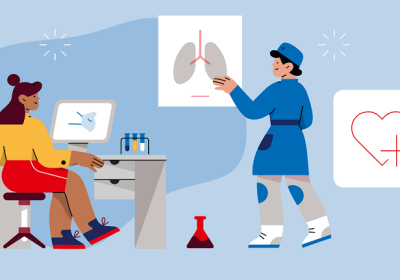
What are the functions of your abdominal muscles?
Your abdominal muscles are a collection of powerful muscular bands that line the inside of your belly (trunk of your body). They are placed in the front of the body, between the ribs and the pelvis.
The abdomen is composed of five major muscles:
- External obliques.
- Internal obliques.
- Pyramidalis.
- Rectus abdominis.
- Transversus abdominis.
External obliques.
The external oblique muscle is one of the abdominal muscles on the exterior, stretching from the bottom part of the ribs to the pelvis. The external oblique muscles, which are big and reside on the upper surface of the abdomen just under the subcutaneous fat and skin, cover the sides of the abdominal region.
On each side, the external obliques:
- Assist in rotating the trunk
- By contracting the external oblique bilaterally in conjunction with the rectus abdominis and internal oblique, the trunk is flexed by bringing the pubis towards the xiphoid (like in crunches or sit-ups)
- Stabilizing the central structure
- Assist in drawing the chest lower, compressing the abdominal cavity.
- Assisting with forced expiration in the respiratory process
- Assist with side-to-side bending
- Because the external obliques contribute to a range of trunk movements, tension or damage to the muscle may be debilitating, even for actions that do not directly involve the muscle, such as walking or running.
Internal Obliques
The internal abdominal oblique is a lateral abdominal muscle. It is broad and thin. It is one of the layers of the lateral abdominal wall, along with an external oblique and transverse abdominis. Its oblique fiber alignment gives it its name. The internal abdominal oblique helps maintain belly pressure and trunk movement with the other muscles.
Pyramidalis Muscle
The paired pyramidalis muscles are little triangular-shaped muscles located between the anterior and posterior surfaces of the rectus abdominis. Although the precise function of the pyramidalis muscle is unknown, it is believed to tighten the linea alba. When they contract, they tighten the linea alba and work in conjunction with other abdominal muscles to produce positive abdominal pressure.
Rectus abdominis
The Rectus Abdominis is the outermost layer of your abdominal muscles, sometimes known as your “six-pack.” It is composed of two parallel flat muscles separated by the linea alba (a connective tissue). It works to flex the spinal column, tighten the anterior abdominal wall, and aid in compressing the abdominal contents.
The rectus sheath is a multilayered aponeurosis that serves as a tough, strong, fibrous compartment for the rectus abdominis and pyramidalis muscles.
The rectus abdominis’ primary functions are as follows:
- Flexion of the trunk (thoracic and lumbar spine flexion), which operates by bringing the pubic symphysis and sternum closer together.
- Tend the anterior abdominal wall and aid in squeezing the abdomen’s contents
- It operates in conjunction with other abdominal muscles to correct posterior pelvic tilt.
- Contribute to the stability of the core.
Transversus abdominis
The transversus abdominis is the deepest of the six ab muscles. It goes between the ribs and the pelvis, front to back. The fibers of this muscle run horizontally, like a back support belt. It also helps to retain and support the organs enclosed inside the trunk. Transversus abdominis is a vital lumbopelvic core muscle.
This critical muscle is crucial for maintaining the right position of the abdominal contents and for supporting the lower back.
- Transversus abdominis assists the other abdominal muscles in the following ways:
- Sustain abdominal tension and abdominal viscera support
- Increase intraabdominal pressure, which aids in forced expiration, coughing, and feces defecation.
- Support the lumbopelvic in conjunction with other core muscles throughout our movement.
- Unilateral action: trunk rotation in the ipsilateral direction
Remember that you could always Ask a doctor if you have any queries or doubts about your abdominal muscles.
It’s advisable to take Covid 19 Vaccine.


















